Winter blues? It’s snow-k! Our member tips will have you outside taking great snow shots in snowtime!
Hello all, Sarah Mazza here! Snow it’s time. We asked our forum members if they wanted the chance to be part of a collaborative blog project featuring photos and tips about shooting images in the snow and their response was amazing. I want to thank everyone that took the time to submit images and/or tips for this project; while we may not have been able to feature everyone we appreciate everyone’s participation.
Just a warning for anyone not familiar with my tendency to be a bit quirky. You may recognize a theme throughout this article…maybe it’s just that I’ve been housebound for almost a month with my entire household being sick and I’m a wee bit envious that one of our team members is vacationing somewhere warm and fun…somewhere I’d much rather be, lol. That and I may use some snow puns. Perhaps a lot of them.
Here are some tips of my own to get you started in case you are heading out to shoot some freshly fallen snow and you aren’t very familiar with taking your gear out into cold weather conditions. Most importantly, be careful and have fun! Sno’ problem – let’s get to it then, shall we?
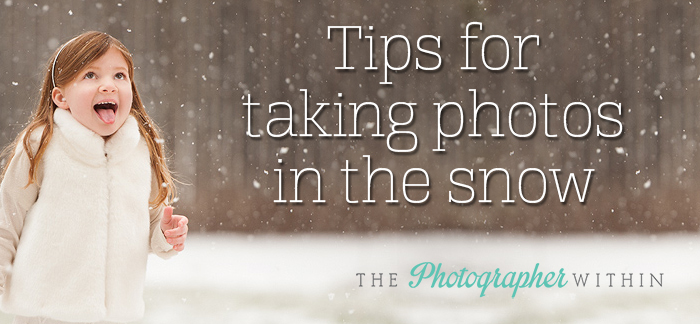
Snow White and the Seven Tips For Shooting Outdoors In It
Batteries
They die quickly in cold weather. I personally have never been out long enough to have to use my spares, but if you’re in it for the long haul more power to you! Keep your spares in an inside pocket of your jacket, zipped up nice and tight.
Member Lisa Sheehan also suggests throwing a *hot hands* or two in your pockets. Not only does this help keep your hands warmer, but if you hold it to the bottom of your camera near the battery door, it will also help to keep the battery from getting too cold and draining too fast.
Protective Covers
Condensation is not your friend. For any of you that wear glasses, think of when you’ve opened up the dishwasher with them on – yeah, instant fog. Our lenses and the inside components of our cameras do not like the moisture and it can damage them severely depending on the temperature differential. You need to let them warm up slowly when going from outside to inside. The best advice I have to offer is to keep them nicely wrapped in the cover that they should already be in (see links below!) and secure them nice and snug in those. This allows the condensation to settle on the outside of the cover rather than on the inside, getting your camera body and lenses wet.
I’ve used both of these gear covers and recommend them both.
The first one is less expensive and a good option if you’re outside for a short time and need something quick. I used these when I was first trying out the idea of even shooting in conditions like rain and snow.
The OpTech USA Rain Sleeve (they also have an option for when you have a flash attached)
The second one I use currently and would recommend if you shoot in the rain or snow frequently. Since Maine is somewhere we spend time frequently and it rains a lot in VA, it was well worth the investment.
Kata KT PL-E-702 Rain Cover
Filters
I am stating for the record that filters are not something that I use everyday, so this is not a lecture that you need to put a filter on your lens or else something will happen to them, because it would be hypocritical of me to do so. However, skylight filters do help to keep moisture off of your lenses and will cut the haze down a bit (which is one reason mine is not always on, since I happen to like haze ). I used the first filter linked below in each size early on in my photography journey and then I invested in a better one, which I am also linking below. They are both good filters and I recommend them both. I shoot primarily with my 35mm 1.4 and 70-200, which is why I linked for 72 & 77mm respectively.
72mm
Hoya 72mm Skylight Multi Coated Glass Filter
B+W 77mm XS-Pro Clear UV Haze with Multi-Resistant Nano Coating
77mm
Hoya 77mm Skylight Multi Coated Glass Filter
B+W 77mm Clear UV Haze with Multi-Resistant Coating
Lenshoods
Snow is very reflective and using a lenshood will reduce any residual glare. They also prevent moisture from falling onto your glass.
Microfiber Cloths
Carry an extra (or two). You should already have one for our glass. Carry one also for your camera body and lens barrel just in case it gets wet. You can never be too cautious. You invested a lot into your gear and microfiber cloths only cost a couple of dollars and are easy to shove into your pockets. They really do come in handy.
Heidi Gavallas took this beautiful shot during Blizzard Nemo last year. She took advantage of the wind and the lines that it was creating on the banks of snow. Even with the wind was blowing directly towards her, she needed to angle herself this way for both the light and composition, but it caused her to have to keep running back into the house to clean her lens off. Her tip is also to always be prepared with a lens cloth so that you can quickly clean off your lens while shooting so as not to miss a shot.
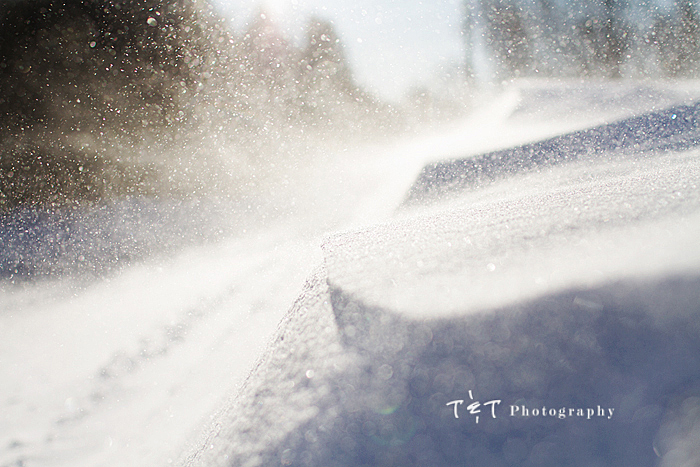
Heidi Gavallas / T&T Photography
Gloves
As an avid knitter, I’m all about fingerless gloves but when I read this tip from fellow team member Heather Rodburg, I got chills. No pun intended, lol. Heather’s local camera store carries these awesome gloves where the tip of the gloves fold backward and have magnets on the fingernail side of the tip. When you pull the tip backward, it connect to the second magnet on the back of the finger locking it in place. Um, sno’brainer, right??? For the gloves similar to what Heather has, check out FreeHands.
Shooting Film
One more tip for any film shooters that we may have, especially those new to film as I’m sure our film buffs are already aware, but I want to cover all the bases. I’m going to bust out a little science for this one. Cold weather = low humidity & low humidity = static electricity.
We already know that cold air cannot hold moisture (which is why we all get those nice chapped lips and cracked hands, at least I do) and there is a chance, a small chance but still a chance, of static electricity building up while shooting film outdoors. If there’s enough of a buildup a flash can cause a spark that in turn will cause the film to fog. Is it rare, yes. But it happens. To prevent this, if you’re shooting manual, advance the film very slowly and carefully. If it’s an autowind, shoot one frame at a time and you’ll be good to go.
Belle of the Ball – Dress the Part
There’s nothing worse than being outside shooting and freezing your butt off because YOU are not dressed warmly enough! One of my favorite tips of all was from member Nat Windsor, who says that she wear snow friendly knee pads, because she always gets down to her subject’s level and generally shoots kiddos and doesn’t want wet spots on her jeans. Cannot say that I blame her, and those would have come in so handy over Christmas break, lol. Gemma Robillard & Dana Foley both agree by dressing warm yourself and being as bundled as your subject it will not only help you to stay out longer, but you’ll also be able to gauge when they’re getting cold, knowing when it’s time to head in.
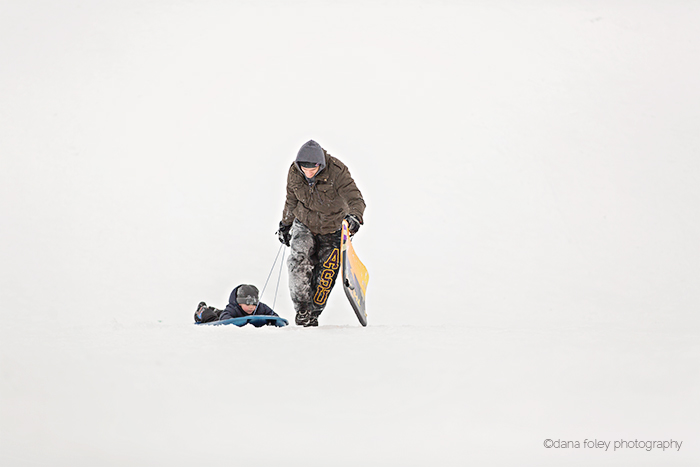
Dana Foley / Dana Foley Photography
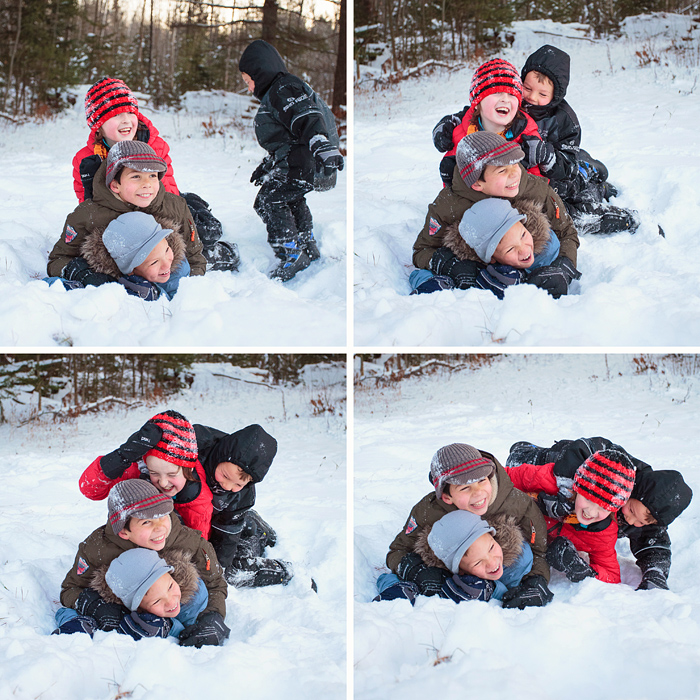
Gemma Robillard / Gem Photography
Meter, Meter, It’s Where You Fall…Help Me Shoot the Fairest Snow of All
Your camera’s metering system is engineered to assume that it’s reading subjects of an average brightness. Fresh, fallen snow is about 1.5 – 2 stops brighter than 18% (medium) gray, which is what your hand-held or built in camera meter expects to see. When metering an image with large amounts of snow, the meter (which isn’t able to differentiate between water, grass or snow), simply exposes it as medium gray. In order for you to correctly expose your shot, you can try a few different options.
In-camera Metering Modes
Canon: Evaluative, Partial, Spot, Center-weighted Average
Nikon: 3D Matrix, Spot, Center-weighted, Average
*While the camera may accurately determine the correct exposure using any one of these metering modes, with a subject like snow you will often see underexposed results.*
Hand Held Meter
The round ball reads the light falling upon it as if it were an 18% (average) gray subject. Just place the ball in the same light as your subject and the exposure will be spot on.
Adjust ISO Dial
If you set your meter’s or camera’s film speed dial to a 1.5 – 2 stop lower setting the camera will expose properly. (For example, use ISO 32 instead of 100).
Exposure Compensation
Exposure compensation is an easy way to get around your camera’s tendency to underexpose bright subjects and to overexpose dark ones, allowing you to quickly over/underexpose from 1/3 to 2-3 stops. Depending on your camera make/model, you may also be able to bracket several frames in a row, with each image being a slightly difference exposure using the Auto Exposure Bracket (AEB) function.
If your camera allows you this option, adjust the setting to about 1.5 – 2 stops of overexposure while shooting in the snow.
Team member Pam Korman, likes to slightly underexpose in the snow. Doing so reveals beautiful contrast and retains highlight detail.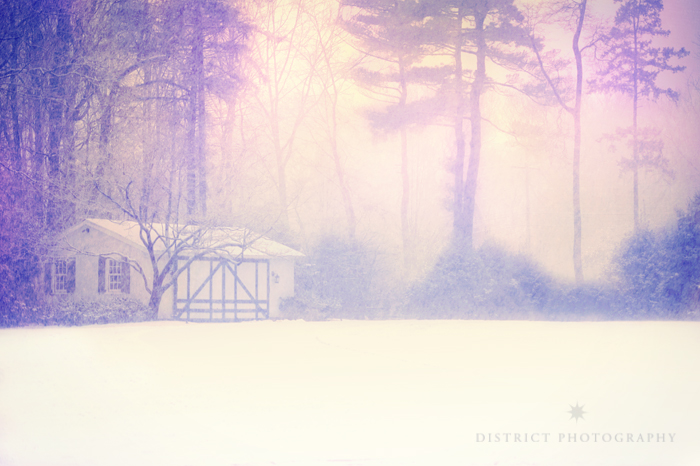
Pam Korman / District Photography
Colors of The Wind – White Balance & Color Casts
So we know that snow is, in essence, one big giant reflector which in a lot of ways can be helpful and conducive to beautiful images. As team member Heather Rodburg points out, this means no greenish yellow color casts or dark hole for circles. However, because snow acts as a reflector, it bounces light everywhere which often creates very flat light. If you want to create some subtle shadowing of a face for a portrait, you need to find a way to block light on one side of the subject. Positioning your subject with a building or wall on one side can be great for blocking light on one side (provided the wall/building is not white!); or, you can actually use a piece of giant black foam core as an “anti-reflector” to block light on one side of the subject.
Here’s two excellent examples from Heather, the first image being flat light and the second image on the right being directional light, where there was a house on one side blocking the light.
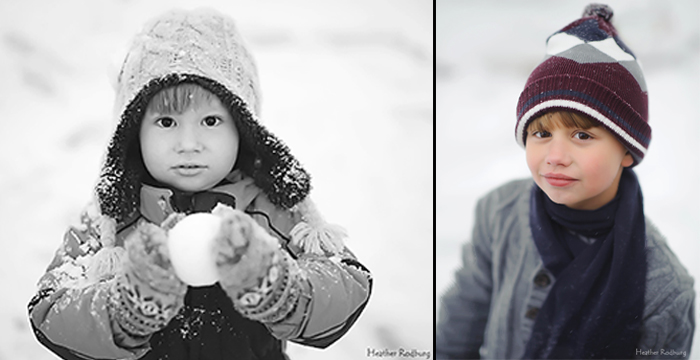
Heather Rodburg / Heather Rodburg Photography
Megan Moore and Lisa Sheehan both have a great tip for achieving correct white balance. Since snow already has a cool blue color, you may want to warm it up ever so slightly to even out those cool tones. You can do this a couple of different ways. Some camera models have a cloudy/shade setting that may give you the look you want. Personally, I suggest shooting with a Kelvin white balance or better yet, setting a custom white balance. To do this, I use my ExpoImaging ExpoDisc. There are other options available; this is just my personal choice.
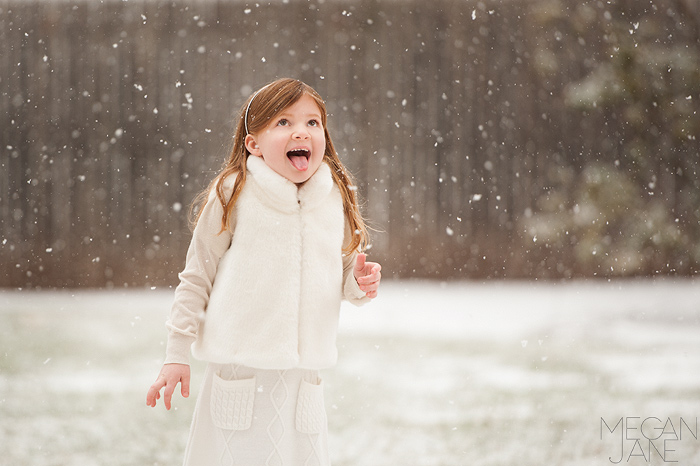
Megan Moore / Megan Jane Photography
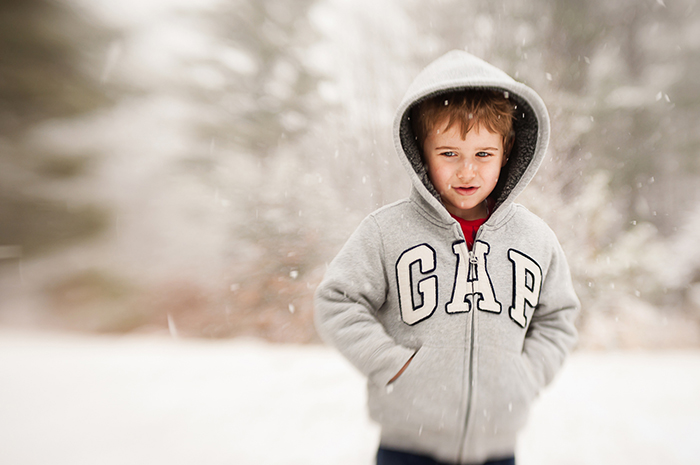
Lisa Sheehan / Lisa Sheehan Photography
Chromatic Aberration
Heather also suggests watching out when shooting wide open if the subject is wearing dark or black clothing with a white backdrop as this can cause a lot of chromatic aberration, or CA is it is often shortened to in posts. CA is that weird purplish/pinkish/greenish color that appears along the edge where the dark meets light. Most of the time it can be corrected in programs like ACR or Lightroom, but if it is extreme if may be impossible to correct it all. If you know your lens is prone to it, stopping down can help eliminate that problem.
And At Last I See The Light…It’s Real & Warm & Bright
This is snow cool. I absolutely love, love, love golden hour, backlighting and everything they bring to an image. Add some snow and it’s pure magic. Forum member Julie Laz described it best when she said golden hour makes the snow glimmer. It absolutely does! She recommends having your subject throw some up in the air or trying to capture the blowing snow as it swirls through the light and see what happens.
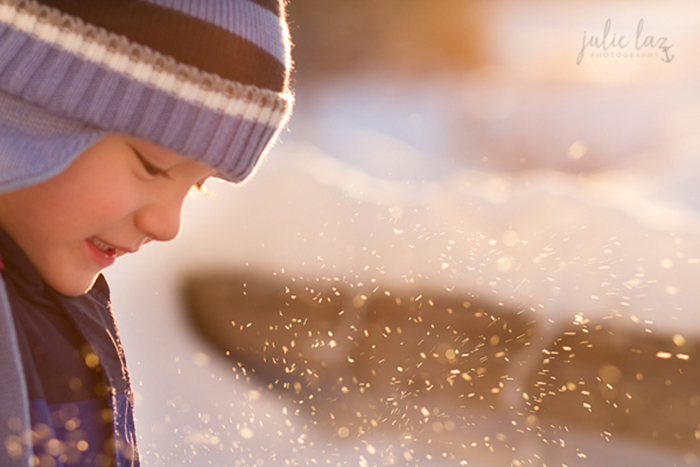
Julie Laz / Julie Laz Photography
Gemma Robillard also loves the colors of golden hour in the early morning and late afternoon. She says the soft long shadows cast onto the snow always add a little extra interest. We agree, Gemma!
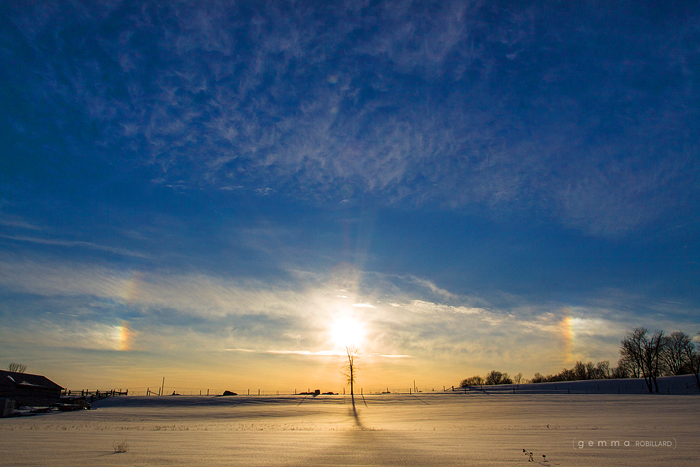
Gemma Robillard / Gem Photography
These golden hour images are nothing short of stunning. The warmth of these colors against the snow is just spectacular!
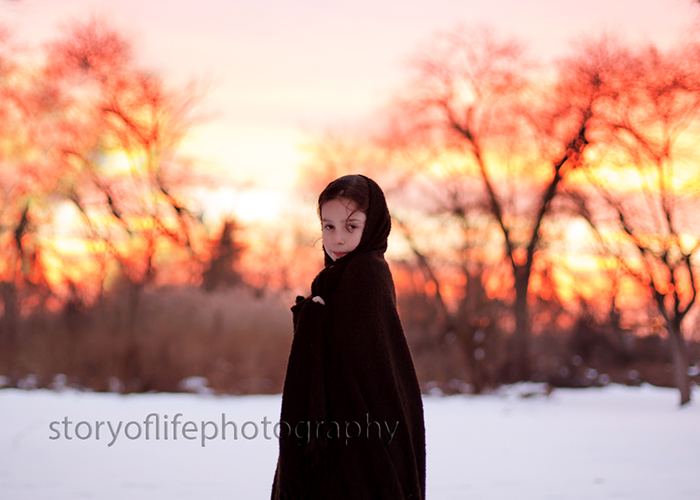
Dalia Sherman / Story Of Life Photography
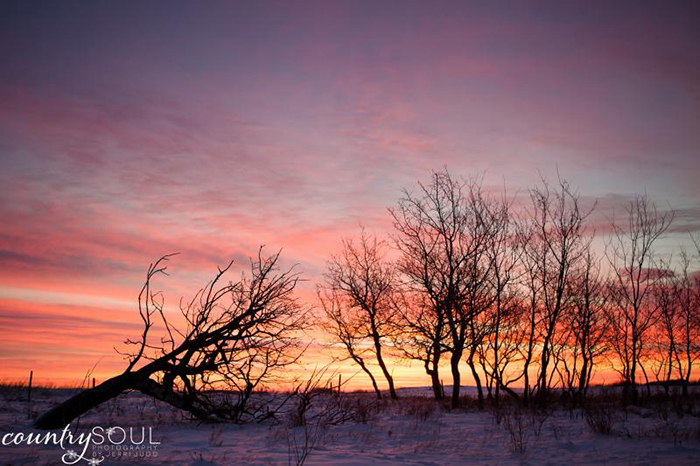
Jerri Judd / Country Soul Photography
I also want to include a couple of images that I shot at night, because I personally happen to love the dramatic, moody scenes that shooting in the snow in the dark lends itself. Don’t be afraid to crank that ISO or as you’ll see, you can always find other light sources to help set up your composition.
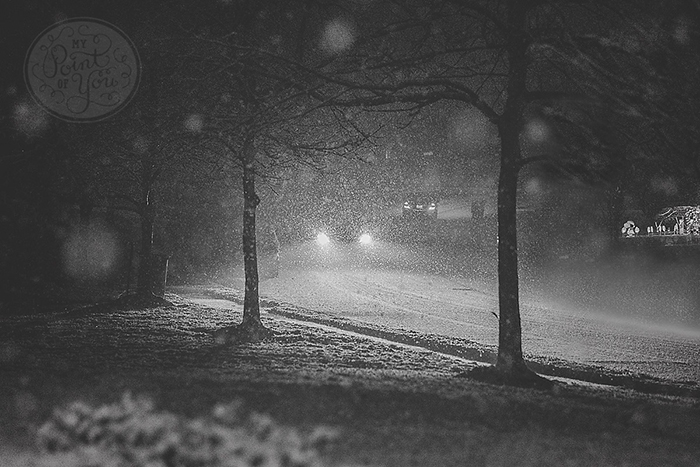
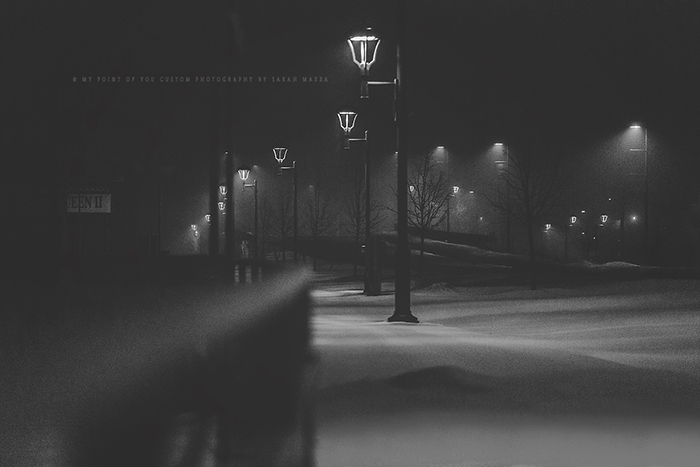
Sarah Mazza / My Point Of You Custom Photography
Snow. I really hope you found our member tips as helpful and informative as we did. Mother Nature has been more than generous with winter this season, so pick up your gear, protect it accordingly, dress warm and get outside and SHOOT. We’d love to see your snow images! Not a member yet? What are you waiting for! Join our community here now. We’d love to have you!
And just to really show you what a goofball I am and the importance of getting out there and having fun? Here’s an image my husband took of my kiddo taking me down like a boss in the snow at my Mom & Dad’s up in Maine. I am no match for my 13 y/o, and what’s worse is that he’s my youngest! It was a blast. Would I let him do it all over again? Absnowlutely.
Sarah Mazza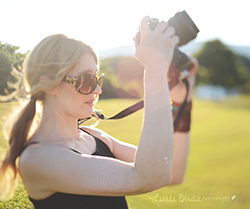
An overall creative based out of the Northern VA/D.C.Metro area, Sarah is a married momma
to three teenage boys and an amazing husband.
When they aren’t keeping her super busy or
she’s not shooting? You’ll usually find her with a hot cup of coffee or tea, knitting furiously
while trying to do ten other things at the same time. One day she’ll figure out a way to workout, knit, and shoot simultaneously…it will happen. 😉
In her (favorite) Shutterbag: Canon 5D Mark III, 35mm 1.4L, 70-200mm 2.8 USII,
Lensbaby Composer with Sweet 35 Optic, Canon AE-1, Mamiya 645, 80 1.9
Tags: beautiful photographs, cold weather photography, Inspiring Photography, photography forum, photography tutorial, snow pictures, taking photos in the snow, winter photos, winter portraits
Categorized in: From the team, Tips & Tricks

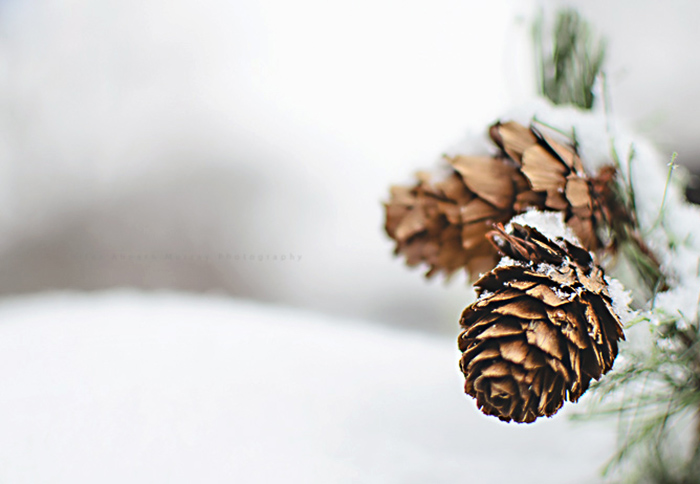
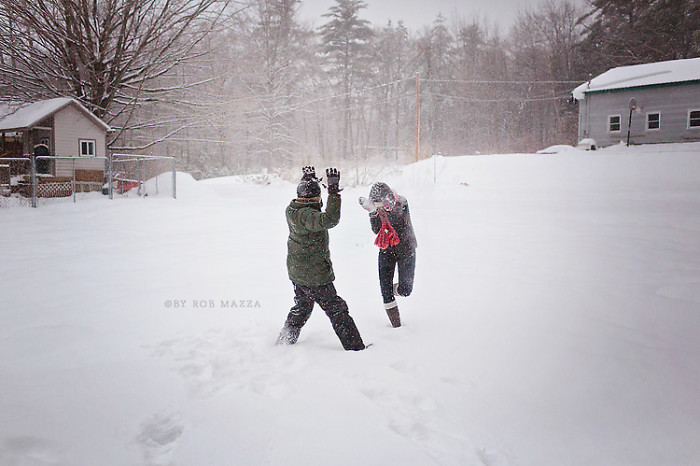
14 Comments
Sarah, what an amazingly informative article. I loved hearing everyone’s tips and learned a thing or two. Thank you so much for putting this together!
This is an incredible article. I’ve been wondering about a bunch of these things, being self trained, and I’m so grateful to have all this info in one place. Thank you!
Love it Sarah! Lots of awesome tips… and I think I need to order those gloves 🙂
Sarah- thanks snow much for those great tips. We need one more good snow here in NOVA for me to practice…well-two more would be nice;-) Thanks again.
I have been lamenting my lack of inspiring snow images, but I’ve also been so afraid of harming my gear with these sub-freezing temps. This was an excellent article! Thank you so much!!!
SNO AWESOME 🙂 Great post – and I enjoyed all the tips! I’ll have to try some out soon, seeing as how we’re covered in about 50″ of snow right now, looks like I’ll have plenty of time 😉
Beautiful photography and what fab tips.
Ha! Sarah cracks me up! What a wonderful post full of fantastic tips. Thanks again TPW!
Haha! You are SNOW funny, Sarah! Love these tips…sure wish I could use them but seeing as we hardly ever get any snow, I’ll live vicariously through all of these gorgeous images!
Love it Sarah! Thanks for the wonderfully put together informative tips 🙂
Oh my – I loved this post! So many helpful tips for shooting in the snow. Can’t thank you enough for assembling all of the advice and beautiful photos!!!
Loved the puns! Great article.
A lot of great snow picture taking tips around here! Thanks for sharing the information
Sarah, this was such a great article – so fun and so informative! Thanks for including my picture – you made my day! 🙂